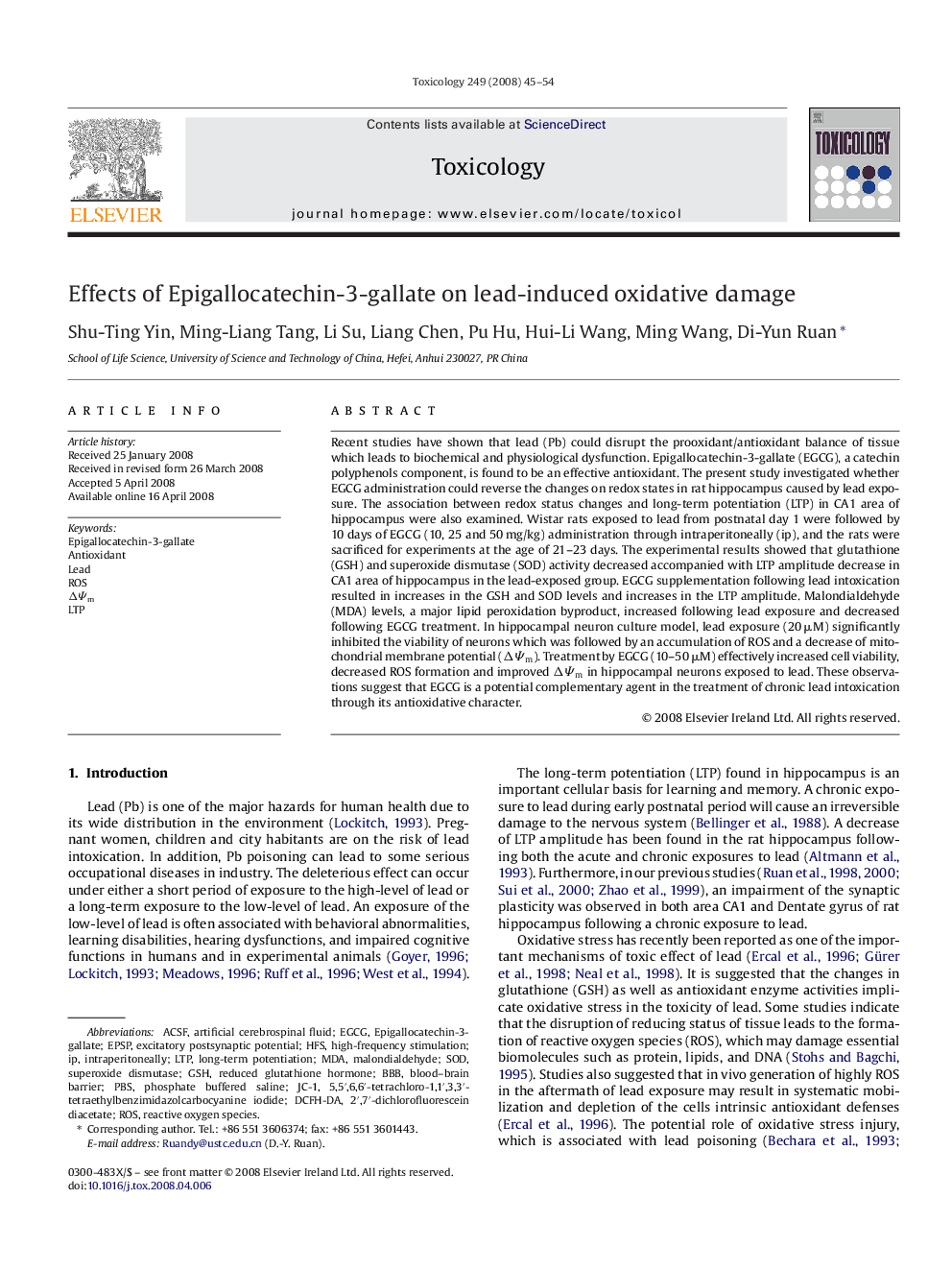| کد مقاله | کد نشریه | سال انتشار | مقاله انگلیسی | نسخه تمام متن |
|---|---|---|---|---|
| 2597217 | 1132573 | 2008 | 10 صفحه PDF | دانلود رایگان |

Recent studies have shown that lead (Pb) could disrupt the prooxidant/antioxidant balance of tissue which leads to biochemical and physiological dysfunction. Epigallocatechin-3-gallate (EGCG), a catechin polyphenols component, is found to be an effective antioxidant. The present study investigated whether EGCG administration could reverse the changes on redox states in rat hippocampus caused by lead exposure. The association between redox status changes and long-term potentiation (LTP) in CA1 area of hippocampus were also examined. Wistar rats exposed to lead from postnatal day 1 were followed by 10 days of EGCG (10, 25 and 50 mg/kg) administration through intraperitoneally (ip), and the rats were sacrificed for experiments at the age of 21–23 days. The experimental results showed that glutathione (GSH) and superoxide dismutase (SOD) activity decreased accompanied with LTP amplitude decrease in CA1 area of hippocampus in the lead-exposed group. EGCG supplementation following lead intoxication resulted in increases in the GSH and SOD levels and increases in the LTP amplitude. Malondialdehyde (MDA) levels, a major lipid peroxidation byproduct, increased following lead exposure and decreased following EGCG treatment. In hippocampal neuron culture model, lead exposure (20 μM) significantly inhibited the viability of neurons which was followed by an accumulation of ROS and a decrease of mitochondrial membrane potential (ΔΨm). Treatment by EGCG (10–50 μM) effectively increased cell viability, decreased ROS formation and improved ΔΨm in hippocampal neurons exposed to lead. These observations suggest that EGCG is a potential complementary agent in the treatment of chronic lead intoxication through its antioxidative character.
Journal: Toxicology - Volume 249, Issue 1, 10 July 2008, Pages 45–54